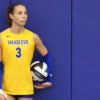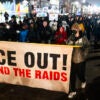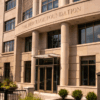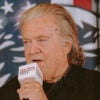Editor’s Note: Protests are building at the Democratic National Convention in Chicago. In May, The Daily Signal’s Jarrett Stepman wrote a short history of the 1968 DNC where—just like today—a Democrat incumbent president stepped down for a vice president. The party was deeply divided over the Vietnam War and today is divided about the war in Gaza. Vice President Kamala Harris is running on the “politics of joy.” Hubert Humphrey also ran with the slogan “The Politics of Joy” in 1968. Back then, riots by left-wing activists in Chicago disrupted that message of joy and unity. Are we seeing a repeat this week? The following is Stepman’s write-up, originally published on May 19.
Will we see a repeat this summer of the infamous 1968 Chicago Democratic National Convention that devolved into chaos and anarchy? This year’s convention is, like 1968, set to take place in Chicago and social unrest is percolating on the Left, to say the least.
In a recent interview on Fox News, Rep. Dean Phillips, D-Minn.—who challenged President Joe Biden in the Democratic Party presidential primary—said that given our current course of events, history is likely to repeat itself.
“I’m afraid this is looking awfully like 1968 with a lot of anger and angst and disenfranchisement that I think are going to play out on TV this summer, and it’s going to be awfully contentious,” Phillips said on Wednesday.
In 1968, anti-Vietnam War and various other far-left protesters descended on the Windy City to protest the party’s presidential nominating convention.
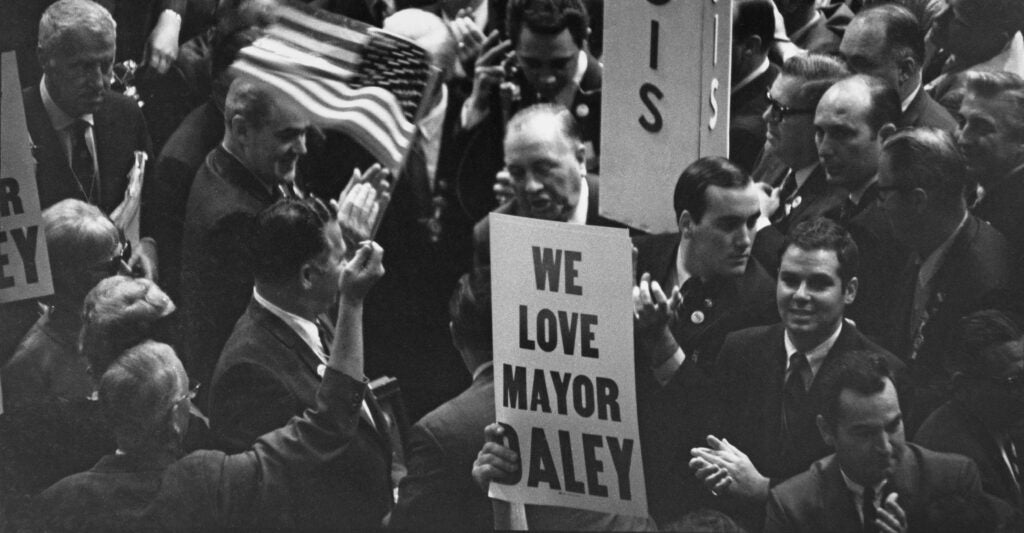
Illinois delegates hold a banner touting Chicago Mayor Richard Daley on the convention floor on Aug. 29, 1968, the final day of the 1968 Democratic National Convention, held at the International Amphitheatre in Chicago. (Pictorial Parade/Archive Photos/Getty Images)
The situation escalated when then-Chicago Mayor Richard Daley, a Democrat, had enough and unleashed the Chicago Police Department on the protesters.
The media at the time strongly criticized the Chicago Police Department, but many Americans strongly sympathized with the authorities, who desperately sought to restore order. The events of the convention likely swayed a lot of voters concerned about violent radicals taking over their cities. Many in the media sided with the protesters, while the American people largely sided with the police.
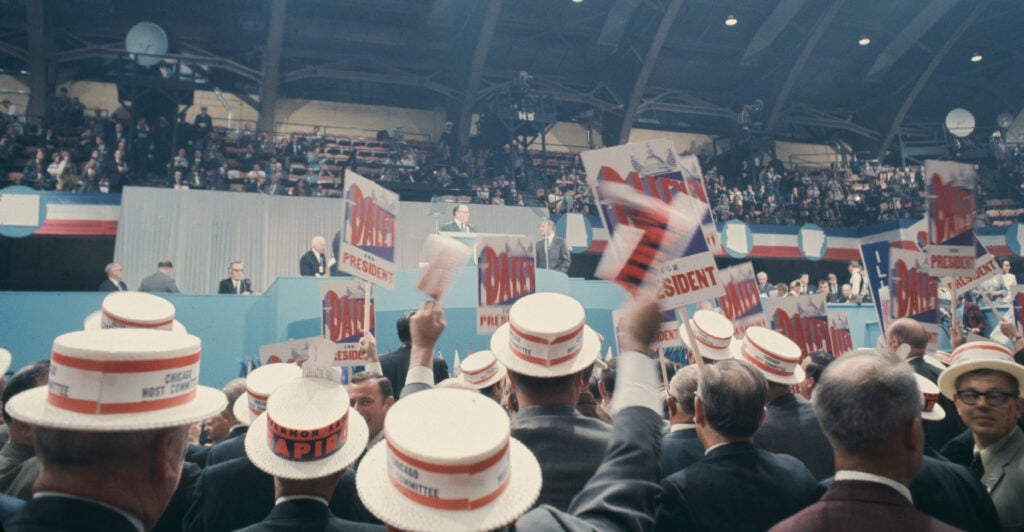
Democratic Party delegates hold placards at the 1968 Democratic National Convention, held at the International Amphitheatre in Chicago in August of that year. (Archive Photos/Getty Images)
The chaos was likely one of the reasons Republican Richard Nixon defeated Democrat Hubert Humphrey in November 1968. Preelection chaos created by the Left led to the “silent majority” delivering Nixon a resounding victory.
Given the protests we’ve seen across the country in recent months and the pressure the Left is putting on Democrats over Israel’s war in Gaza, it’s hard not to think that this year’s Democratic convention could see similar protests.
Chicago Mayor Brandon Johnson has said that safety is a “top priority” for the convention, but he’s hardly the law-and-order mayor that Daley was. In fact, Johnson has supported defunding the police, has openly sympathized with the anti-Israel protesters, and even made it clear that he’s nothing like Daley.
As my colleague Tony Kinnett noted, Johnson has said he’s a different kind of Democrat. In a certain sense, Johnson’s attitude is a sign that in the long-term, the New Left factions that protested in Chicago in 1968 “won.” (More on that later.)
While prominent Democrats and members of the media insist that 2024 won’t be like 1968, it’s difficult not to see that a storm is potentially brewing.
There have already been significant protests at Chicago universities, pro-Palestine groups have sprung up around the city (some spouting chants like “Death to America!”), and a large group of anti-Israel protesters raised a Palestinian flag near where the Democratic convention is set to take place Aug. 19-22.
There’s no question that Democrats are already getting nervous about what might happen.
The 1968 convention was a seminal moment in both the history of the Democratic Party and the United States. It signaled a long-term takeover of the party and various other institutions by the New Left.
Given that the comparisons will continue to be made, it’s worth looking back at what happened 56 years ago.
New Left Organizes to Sow Chaos
In 1968, President Lyndon Johnson had elected not to seek a second term despite winning a landslide in 1964. Even though the Vietnam War had been conducted by Democratic presidents, the party had turned in an antiwar direction. This became a flashpoint for a party that had become increasingly divided.
The common narrative of the Chicago Democratic National Convention in the years that followed was that it was a “mostly peaceful” protest of the Vietnam War, broken up by a brutish and out-of-control Chicago police force.
That’s not exactly accurate.
The reality is that the well-organized protesters were looking to pick a fight to bolster their cause, as historian Stephen F. Hayward described in his book, “The Age of Reagan: The Fall of the Old Liberal Order, 1964-1980.”
“The Chicago police reacted to a calculated provocation,” Hayward wrote. “And, like the case of fighting schoolchildren, where the second child to strike a blow is the one usually caught by the teacher, the media caught the police reaction and attributed it as the cause of the violence.”
Hayward explained how plans to disrupt the convention began as early as December 1967 and were the product of three main groups.
Those groups were the Youth International Party, or the “Yippies”; the National Mobilization to End the War in Vietnam, or “Mobe”; and the Students for a Democratic Society, the SDS. The factions had slightly different agendas for what they wanted to pull off in Chicago.
The Mobe generally wanted a peaceful protest to take place, though it wasn’t exactly averse to causing mayhem—and potentially, violence.
“It would be a mistake to think that the fight against the war can be won in the ballot box,” said Mobe leader David Dellinger. “It still has to be won on the streets.”
The Yippies wanted something more like a giant street festival. They announced a plan to put LSD in the Chicago water supply. Chlorine treatment of the water would have neutralized any threat to the Chicago population, but the Chicago police took the threat seriously enough to put officers in front of the city’s filtration plants.
The Students for a Democratic Society were looking for a fight. Hayward noted that the reasons the SDS was looking to ratchet up violence is that they saw liberal antiwar presidential candidates like Robert F. Kennedy and Eugene McCarthy as a threat.
For leaders of this movement and others on the far Left, the entire American system needed to be overthrown. They weren’t looking for peace in Vietnam; they were looking to overturn the American way of life and government.
While the three factions plotted different tactics to achieve their goals, they were nevertheless united behind a larger agenda.
They wanted to sow chaos as much as possible so that they could eventually shove their more moderate cohorts on the Left aside and take the reins of power. They wanted to agitate, disrupt, and put the most pressure possible on Democrats to bend to their will.
Humphrey frequently mentioned on the campaign trail that he wanted to bring the “politics of joy” to the country. The activists were having none of it.
“We are coming to Chicago to vomit on the ‘politics of joy,’” SDS leader Tom Hayden wrote before the convention, “to expose the secret decisions, upset the nightclub orgies, and face the Democratic Party with its illegitimacy and criminality.”
Days of Rage
Given the other events of 1968, it isn’t hard to see why the Democratic convention became a mess in hindsight.
Two riots had already taken place in Chicago earlier in the year. Civil rights leader the Rev. Martin Luther King Jr. was fatally shot in April and Robert Kennedy was assassinated in June.
Many college campuses had been in turmoil in the spring. Student protesters had practically shut down Columbia University and occupied Hamilton Hall before being cleared out by the New York Police Department in late April. Yes, I’m still talking about 1968 here, not 2024.
By August, the mood was still deeply unsettled. The Democratic race came down to Vice President Hubert Humphrey and Sen. Edmund Muskie of Maine. While the party had conceded a great deal to the antiwar wing, it wasn’t nearly enough to appease the activists.
There were late attempts to move the convention to Miami, but they didn’t come to fruition. Johnson, who remained a powerful influence in the party, was alleged to have said that “Miami is not an American city.” The show went on.
The 1968 convention was set to take place for four days in Chicago’s International Amphitheater, starting on Aug. 26. Before the events kicked off, protesters began gathering in the city.
Daley was hesitant to issue permits to the protesters, but consented to let them gather miles from the convention in Lincoln Park. He then changed his mind and ordered Chicago police to implement an 11 p.m. curfew.
Again, while many of the about 12,000 protesters who showed up in the city likely wanted to conduct a peaceful protest, the organizers knew that it would be easy to manipulate the situation to initiate violence.
More from Hayward:
[H]ard-core leaders of the Left knew it would be easy to manipulate the situation into a violent confrontation with police—and be able to blame the police.
Chicago’s police were notoriously aggressive toward protesters and rioters. [Daley] had famously ordered his police to “shoot to kill” arsonists and looters during the riots that followed King’s assassination in April. (It should be noted, however, that no one was shot during the convention riots.)
Once the protesters had been pushed out of Lincoln Park, all hell began to break loose as the protesters violently clashed with police, who used tear gas and billy clubs to disperse the crowd.
It wasn’t just police clashing with the protesters. Daley brought thousands of National Guardsmen into the city, too, with the governor’s consent.
Violence continued to ramp up around the city as the protesters continued to clash with police, and members of the media got caught up in the melee.
Aug. 28 saw the most significant day of violence at the so-called “Battle of Michigan Avenue,” which was televised live. That night, Humphrey secured the nomination as police clashed with protesters who had attempted to march on the convention.
Authorities put up barricades around the convention site and tightened up security even further for the final day of the convention, where protesters twice tried to get into the convention hall, but were rebuffed.
Hundreds of protesters and police officers suffered injuries during the scrums and authorities arrested more than 650 people.
Though many prominent Democrats blamed Daley for the violence that took place, Daley naturally disagreed.
He argued that calling on the police and National Guard was necessary to suppress people who were intentionally creating violence and disorder.
Daley gave a speech addressing what had happened.
“In the heat of emotion and riot, some policemen may have overreacted,” he said. “But to judge the entire police department by the alleged action of a few would be just as unfair as to judge our entire young generation by the action of this mob.”
Daley further said that while he didn’t condone any violent actions, he also would not permit a “group of violent terrorists to menace the lives of millions of people, destroy the purpose of this national convention, or take over the streets of Chicago.”
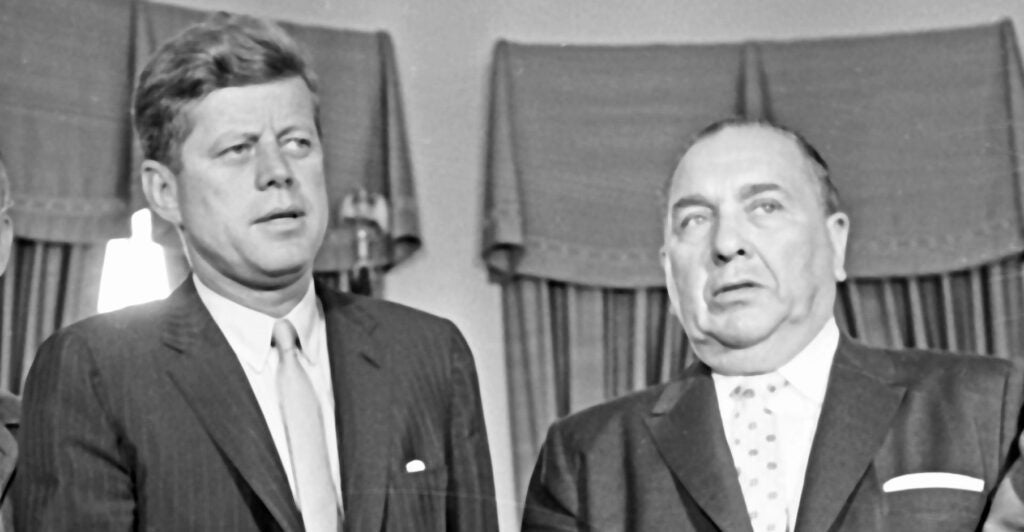
Chicago Mayor Richard Daley confers with President John F. Kennedy, a fellow Democrat, in the Oval Office of the White House on July 11, 1962. Daley was still mayor six years later during the 1968 Democratic National Convention. (Arnie Sachs/CNP/Getty Images)
The Aftermath
SDS leader Hayden said that the result of the Chicago protests was “100% victory in propaganda” and said he hoped that what happened in Chicago would be repeated around the country whenever Humphrey showed up at a campaign stop.
From the perspective of the New Left activists, the chaos was seen as a victory. The fact that several prominent members of the media were injured in the events was a bonus that would lead to sympathy and positive coverage for their cause, or so they said.
But attitudes around the country were hardly universal. Most Americans sided with Daley and the police over the activists, and many thought the police should have been even more proactive.
“A poll taken shortly after the riots found that 71 percent of Americans thought Chicago’s security measures were justified; 57 percent thought the police had not used excessive force, while 25 percent thought the police had not used enough force,” Hayward wrote.
In a sense, both the activists and their most stalwart opponents benefited politically from the Chicago convention.
The moderate wing of the Democratic Party continued to lose power and influence. The party was forever changed by what had transpired, and popular narratives took hold that the activists were on the right side of history, while the authorities were simply reactionaries.
On the flip side, a rising coalition on the Right—fed up with the urban chaos and intentional agitation—would deliver the White House in a landslide to Nixon.
